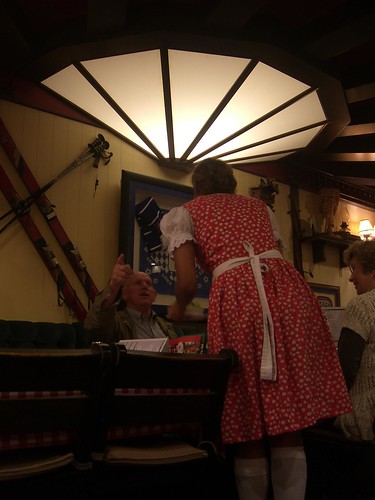When you actually examine the data (Bent Flyvberg‘s data is particularly illuminating) you see that Light Rail Transit’s (LRT) ability to heal a city’s transit woes are negligible at best and non-existent at worst, especially in relation to the costs associated with the technology.
So why, then, do we keep coming back to LRT?
Well, imagine for a second, a series of traditional transit technologies ranked by capacity and cost, from low to high. Seriously, close your eyes and think about it or scratch it out on a slip of paper.
Now what does your series look like? I’m guessing you imagined something like this:
Bus (BRT)
Streetcar, Light Rail (LRT)
Subway (HRT)
Now, tell me this: Which is the “medium class” or moderate technology. Did you say “streetcar”? Good, so did I.
Whether by accident or intention, Streetcars and Light Rail occupy that wonderful sweet-spot between a technology we don’t like (Bus) and a technology we can’t afford (Subway), and because of its fortuitous placement, we gravitate towards it.
The same phenomenon occurs in restaurants. When most of us dine out we don’t want boring pasta but we also don’t want to pay for high-priced steak. The moderately-priced chicken, however, satisfies our needs and we tend to opt for it.
(Incidentally, most successful restaurants and retail establishments know this and ensure the profit margin on mid-priced products are higher than on other higher or lower-priced products. You can find a detailed explanation of this concept in Dan Ariely‘s fantastic book Predictably Irrational.)
I suspect a similar phenomenon occurs in transit planning.
If you will, LRT is the conservatively-pleasing chicken when the only other options available are the plain-jane pasta Buses and steeply-priced steak Subways. I suspect our preference for LRT is not guided by the qualities of the technology itself, but is instead guided by our need to gravitate towards a moderate option which is defined in relation to other technologies.
The ironic thing is this: LRT is not moderate. Not at all. In fact, no such moderate system is commonly thought to exist, a point made explicit in the Urban Transit series of textbooks by Dr. Vukan Vuchic.
When one examines the cost and theoretical capacity of LRT, one finds it to be better suited to less-than-heavy-but-more-than-moderate capacity installations. Yet because LRT occupies the middle grounds of our minds, we opt for it even where it is demonstrable overkill.
So then the obvious question is this: How would we opt if we included a fourth legitimate, yet virtually forgotten technology? How about cable? What would that series look like and what would you opt for?
Bus (BRT)
Gondola / Cable Car (CPT)
Streetcar, Light Rail (LRT)
Subway (HRT)
The decision’s a little bit harder now, isn’t it?
Creative Commons image by avlxyz


8 Comments
Interesting, I guess we have something of a hybrid here in Edmonton:
The most significant and oldest part of the LRT system *IS* a subway.
I’d certainly like to see more of it underground. Particularly where it crosses Saskatchewan Dr/Whyte near the N end of Belgravia and the Cross Cancer Centre.
I’ve no real knowledge about Edmonton, but the one thing I do know is that much of the LRT is underground.
It’s one of the strange things about LRT – as soon as you get it FULLY outside of the public right of way, it begins to behave much like a subway, metro or large-scale rapid transit line. Of course to do so requires a much higher level of investment.
The same thing happens with BRT – and CPT for that matter. I think we should spend less time arguing about what technology to pursue and instead work towards finding ways to allow all forms of transit to operate in their own FULLY dedicated rights-of-way. That’s one of the major reasons I keyed into cable – fully dedicated rights-of-way without the usual attendant costs.
No matter what the technology is, that’s really the only way to ensure fast, efficient and safe public transit.
Oh and by they way, thanks for the comment and welcome!
What are your thoughts on BRT for longer distance transportation for longer distances (15km+)? If the roadway is there and the system can be given exclusive or close-to-it right of way is it a good option? I am particularly thinking in regards to linking outlying areas to the cities core.